Medical Emergencies
The Art of Teaching Basketball
What you will discover or recall:
Player Safety & Injuries
Medical Emergencies & Response Plan
Major Medical Emergencies
Player Safety
Player safety is an awesome responsibility and liability that is inherited with basketball coaching. It includes facility and equipment usage, proper skill & technique instructions, educating players, warming up & cooling down, and providing sufficient player rest during practice or games.
Prior to any practice, game or open gym, make sure the facility is safe. Adhere to the first aid adage, “Ounce of prevention is worth a pound of cure.” Learn to be cognizant of potential dangers and hazards around the court area at all times. Double check to see that all standards are stowed out of the way, balls remained picked up, water is not on the floor, etc.
Player Injuries
Unfortunately, in basketball injuries do occur. Most injuries will be minor. However, life threatening injuries can and do occur. Therefore, all coaches must be first aid trained and certified.
- Create a list of players’ emergency phone numbers and keep it available at all times.
- Be fully aware of any health problems your players may possess.
- Be extremely cautious when it comes to head, neck and back injuries.
- Make sure that a first aid kit and supplies are available including ice or cool packs for every game and practice.
- Adhere to the first aid adage, “An ounce of prevention is worth a pound of cure.” Learn to be cognizant of potential dangers and hazards around the court area at all times.
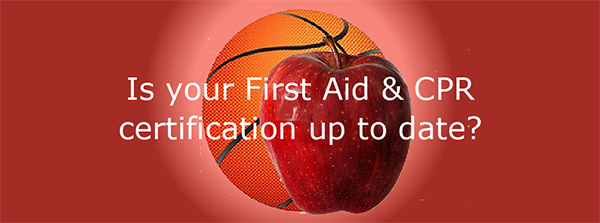
If not, now is a great time to become current. Training and certification does not take much time and the benefits are priceless. CPR (cardiopulmonary resuscitation) training is just not a simple matter of meeting a coaching certification requirement. It is a matter of obtaining the knowledge and capability to save the life of one of your players. Coaches should not step on the floor without it.
Major Medical Emergencies
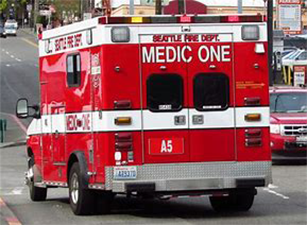
Medical emergencies can be terrifying experiences, especially when unprepared for them. They can take place on the court, in the stands or in transit. It is not always easy to determine how to help in the event of a medical emergency since there are many ways to help, such as summoning first responders, providing immediate care, and keeping the scene safe.
Emergency Response Plan
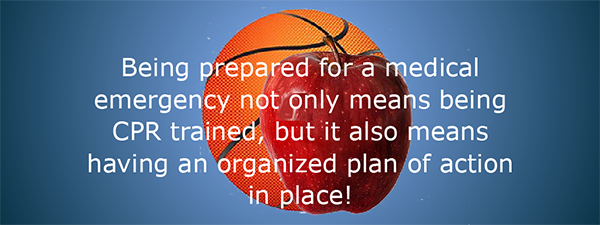
This emergency response model is applicable to all basketball programs on all levels, youth through professional, not just high schools. If you are conducting a basketball program on any level, it is your responsibility to have an automated response system in place in the event of an emergency.
Organizing an automated major medical response system requires coaches to spend 10 minutes at the beginning of each team’s season asking questions of his/her team as to how many have been trained in CPR and would they be willing to assist in the event of an emergency if needed? From this dialog, players are then assigned emergency roles. This creates an automatic response system which allows the coach to remain with the victim without having to give direction.
Automated Response Assignments:
1. At least two players are assigned to call 911.
2. At least two players are assigned to run to the athletic trainer’s or nurses office.
3. Two players are assigned to know where the nearest AED device is and to go retrieve it.
4. Other players are assigned to go to a predetermined location to meet the medics or an ambulance.
After those assignments have been made, the coach fills out a worksheet, which is kept on record in the school’s athletic office. Each team is required to review the assignments periodically during the season.
Printable Medical Emergency Response Assignment Form – Click Here
Sudden Cardio Death
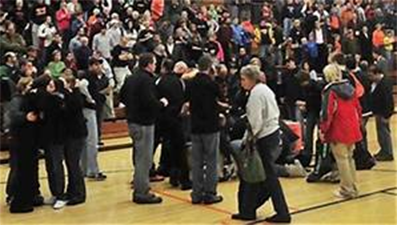
Sudden Cardio Death is the number one cause of death among athletes. However, with the proper preparation and response, the chances of a player’s survival is great. Organizing and having an automated response system in place is critical.
In the United States over 100 sudden cardio deaths occur annually among middle school, high school and college athletes, with basketball having the highest risk. That is one every three days. The risk of sudden cardiac death among NCAA Division I male players is 1 in 3,000. The risk is 3X greater in African-American players than Caucasian players. The risk of sudden cardio death is also 3X greater in males than females.
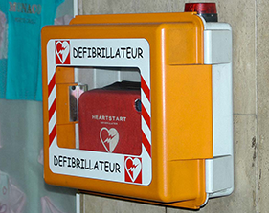
The good news is, if CPR is started and defibrillation applied within the first few minutes of sudden cardio death, the chances of survival is great. Automatic External Defibrillator (AED’s) are now required by law in public malls, airports, and casinos. However, 30 states still do not require them in schools. Make sure your school or venue has one available.
Proper use of an Automatic External Defibrillator (AED) is relatively simple matter and only takes a few minutes to learn. AED’s are practically “dummy” proof. They will only automatically fire (shock) if it is warranted. Note: Coaches’ accessibility after school hours can be a problem that needs to be address.
Learn more about Sudden Death – Click Here
Concussions
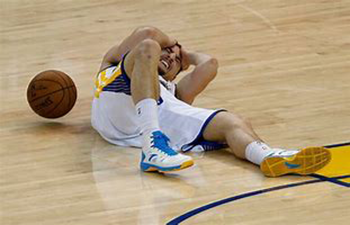
Choices made immediately after a concussion could mean the difference between recovery and permanent injury. Signs and symptoms normally show up along with the injury. However, the severity of the injury may not show up for hours or days later. Concussions are a type of traumatic brain injury that can have a serious effect on the brain. While most players with a concussion recover quickly and fully, some will have concussion symptoms that last for days, weeks, or even months. Recognizing and responding properly to concussions when they first occur can help prevent further injury or even death.
Learn more about concussions – Click Here
Post Traumatic Stress Disorder (PTSD)
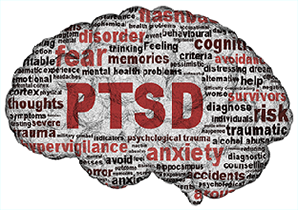
Be aware that Post-Traumatic Stress Disorder is an anxiety disorder that can develop after a person experiences a terrifying or extremely traumatic event. While Post-Traumatic Stress Disorder is mainly a result of being directly involved with a major medical emergency, you can also develop PTSD just by witnessing a traumatic event or long after the event.
If not recognized and treated, Post-Traumatic Stress Disorder can have serious repercussions. These repercussions can range from feeling of extreme fear, anger, guilt, anxiety or helplessness. If any of these symptoms should occur, it is imperative to seek professional therapy and counseling immediately.
Learn About First Aid Treatment & Care of Common Basketball Injuries

_____________________
Coming Next:
Player Motivation
_____________________

| #1 | Coaching, Life Skills, Keys to Success | Tap Here to View |
| #2 | Legal Liabilities | Tap Here to View |
| #3 | Major Medical Emergencies | Tap Here to View |
| #4 | Motivation & Learning | Tap here to View |
| #5 | Player Learning Styles | Tap Here to View |
| #6 | Motor Skill Learning | Tap Here to View |
| #7 | Game of Habits | Tap Here to View |
| #8 | Changing Bad Habits | 8/18/2020 |
| #9 | Goal Setting & Season Review | 8/25/2020 |
_____________________
Posted: July 14th, 2020 under Coaching Strategies | Player Development | Uncategorized.
Tags: Coaching, Concussions, Emergencies, Firsst Aid, Liabilities, Player Safety, Prerequisites, Responsibilities, sudden cardio death




Pingback from Goal Setting | The Official HoopTactics Newsletter – The World's Most In-Depth Look Into Proven Basketball Strategies
Time October 26, 2020 at 11:29 am
[…] Tap Here to View […]